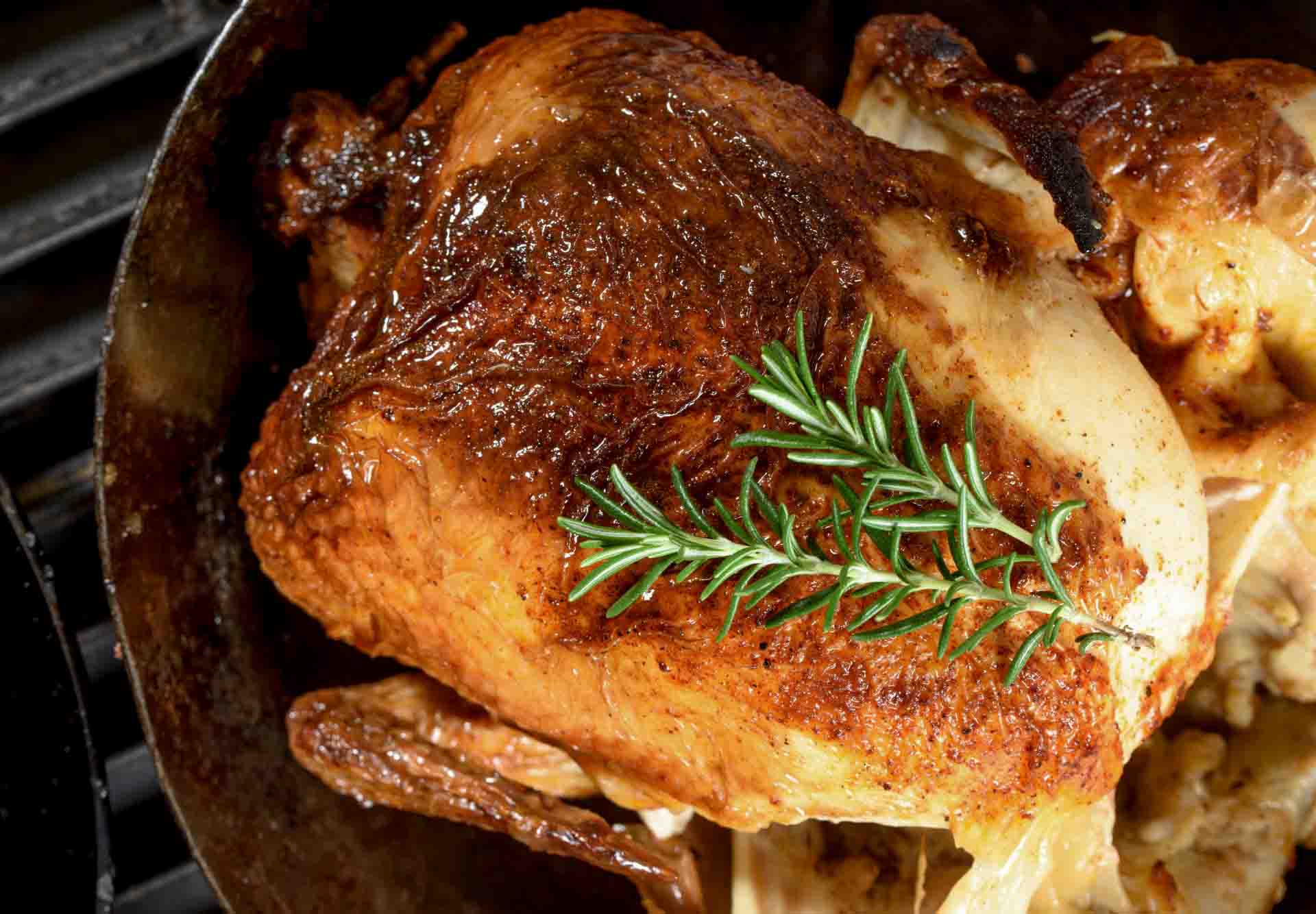Roast chicken is typically reserved for “special occasions,” such as when entertaining guests or celebrating a family milestone. Sure, there’s a certain air of difficulty surrounding the task of cooking a whole chicken. It sounds like you need to plan ahead, use marinades, and maybe even use some unusual cooking utensils. But we’ll try to make the whole process of making Roast Chicken & Stock easier for you.
Truth be told, though, the ease with which a roast chicken may be prepared is one of the reasons I enjoy eating it so much. It doesn’t take a lot of time or effort to make a delicious roast chicken. There is no need for an elaborate marinade or specific roasting rack.
THERE IS NOTHING LIKE A HOMEMADE ROAST CHICKEN
What gives me such a high level of self-assurance that I can casually say things like, “greatest you’ve ever tasted?” Why? Because I’ve found that many supermarket rotisseries and big-box restaurant roast chickens are either overcooked and tough or undercooked and strangely mushy. Anyone?
Trust me, if you’ve never tried roasting a chicken at home, you’re missing out. Juicy, firm flesh with a pleasant flavor. Also, you save money because you get TWO instead of one.
For the finest roast chicken you’ve ever had, all you need is salt, pepper, butter, some basic vegetables and fruit, and 90 minutes. And this is a dish that works equally well for a dinner party as it does for a quiet weeknight at home.
In addition to the tastiest chicken stock you’ve ever had, you’ll also get to feast on your magnificent roast chicken with all of the delectable roasted vegetables basted in those liquid-gold pan juices (maybe with an arugula salad and a pile of mashed potatoes on the side). This is so because stock should always be made after roasting a bird.
Ready? The procedure is outlined below.
INGREDIENTS:
FOR THE ROAST CHICKEN:
- 1 5 pounds of roasting chicken
- 6 carrots (chopped into 2-inch chunks)
- 2 onions (chopped into wedges)
- 1 bunch of fresh thyme
- 1 head garlic (cut in half crosswise)
- 1 lemon (cut into half)
- 2 tablespoons of melted butter
- 1 tablespoon of extra virgin olive oil
- Salt and pepper
FOR THE STOCK:
- 5 black peppercorns
- 2 ribs celery (chopped into large chunks)
- 2 carrots (chopped into large chunks)
- 1 onion (quartered)
- 2 cloves smashed garlic
- 2 bay leaves
- 12 cups of warm water
INSTRUCTIONS:
PART 1: ROASTING THE CHICKEN
- Put a rack in the bottom third of your preheated 425F oven. In a roasting pan, scatter the onions and carrots.
- Remove the chicken from the fridge and let it set out for at least two hours, preferably longer. It would be challenging to cook the chicken evenly if it is chilly. Rinse the chicken inside and out, and take out the giblets. To prepare the chicken, dry it well with paper towels and then liberally sprinkle salt and pepper inside the cavity. Then, stir in 2 1/2 teaspoons of salt and 1/2 teaspoon of pepper to the melted butter and olive oil. Apply this mixture liberally to the chicken’s exterior and, if possible, under the skin.
- Place the thyme, lemon, and garlic within the cavity. String the chicken’s legs together and set it breast-side up on top of the onions and carrots.
- Cut between the thigh and leg to check doneness, then roast for another 15 minutes if necessary.
- Take the chicken and veggies off the grill and place them on a dish, then cover them with aluminum foil and let them steam for about 20 minutes. Serve the chicken breasts cut into bite-size pieces alongside the salad. Be sure to save the drippings from the pan to use as stock.
PART 2: PRODUCING THE STOCK
- When you’re done eating, throw away the halves of lemon, thyme, and garlic that you roasted with the chicken. Throw the carcass of the bird into a stockpot. Additional roasted veggies can be added if any are on hand.
- Put half of the hot water into the roasting pan. To make stock, scrape the bottom of the pan with a spoon and transfer the liquid to a larger saucepan.
- Carrots, celery, onion, garlic, peppercorns, and bay leaves should be added along with the additional 6 cups of water. To prepare, heat to boiling, then lower heat to a simmer. Cover. Reduce to a moderate simmer and let stock cook for 6-8 hours, scraping off any foam that rises to the surface as needed.
- The stock can then be frozen in containers or used immediately in soups or other recipes. Serving the stock in bowls or mugs with a dash of salt can make for a comforting winter beverage.
